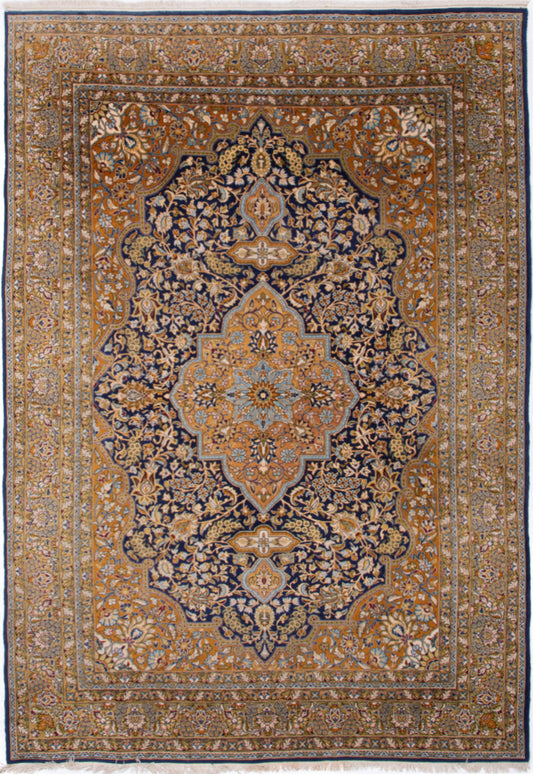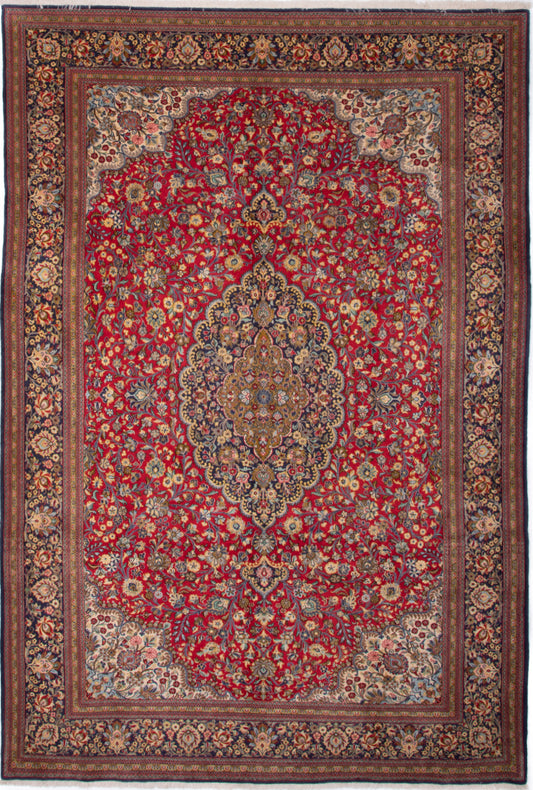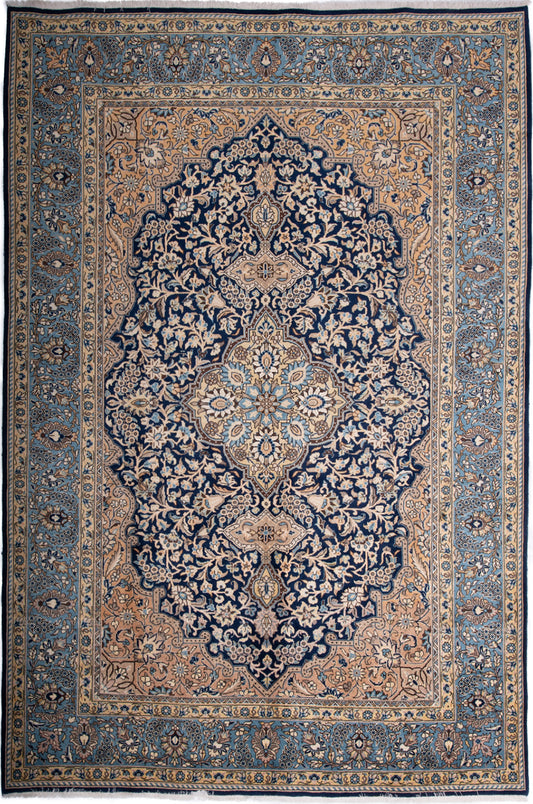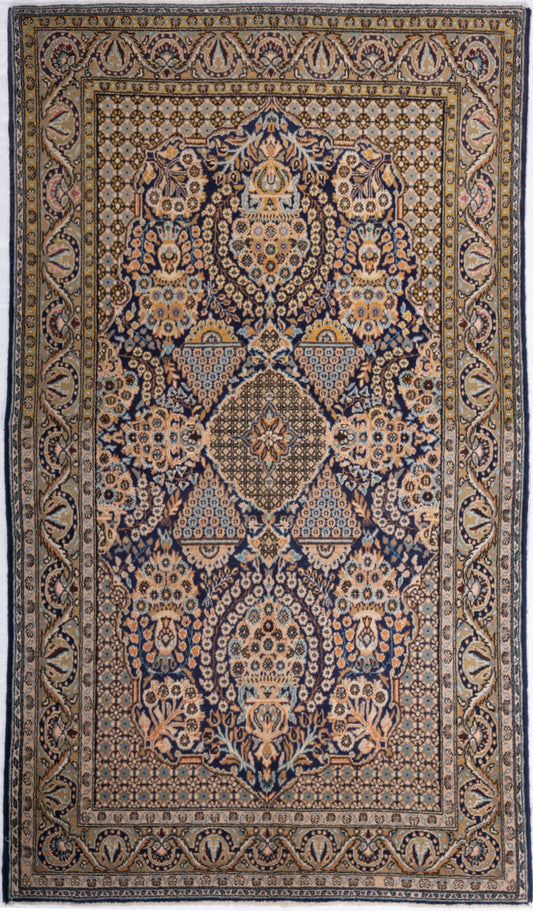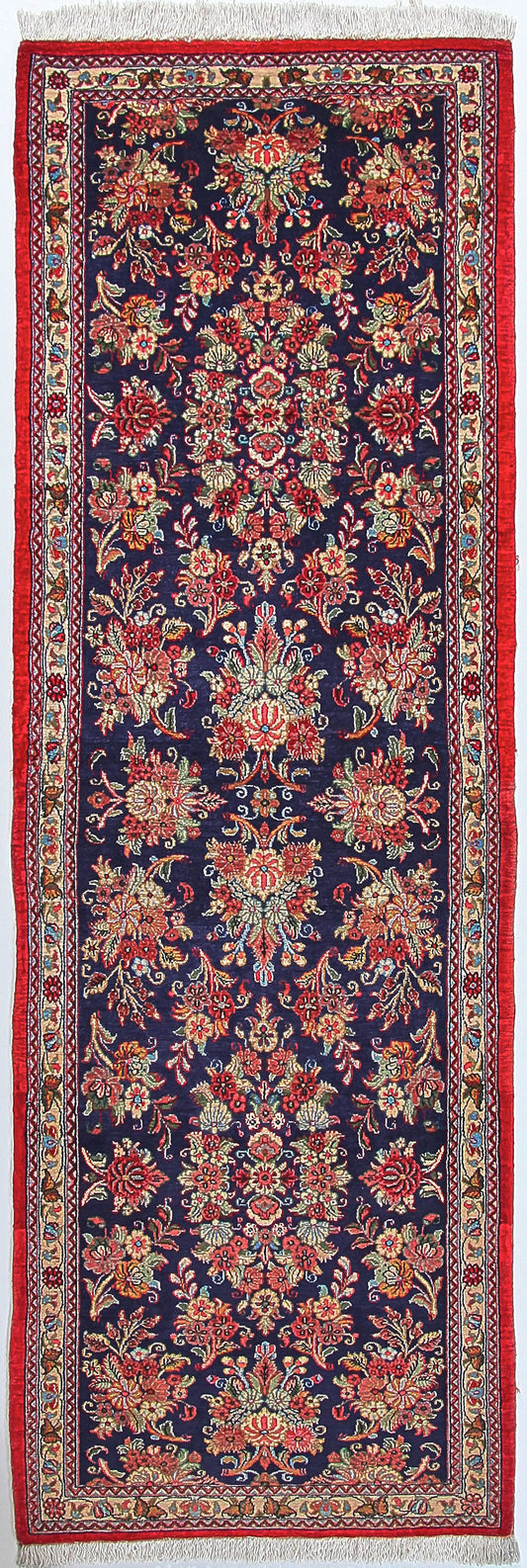Qom Rug History & Origin Guide
Discover the rich history and timeless beauty of handmade Qom rugs from Iran, as we take you on a fascinating journey through their origins and cultural significance. Learn about the city of Qom and its unique place in the world of rug weaving, and find out how you can bring a piece of this heritage into your own home.
A Brief History of Qom
Qom, also spelt as Qum or Ghom, is a city in central Iran known for its religious significance and rich cultural history. As one of the holiest cities in Iran, Qom is home to the shrine of Hazrat Fatemeh Masoumeh, sister of Imam Reza, and has been a centre for Islamic theology and education for centuries.
The city's strategic location along the ancient Silk Road made it an important hub for trade, and its vibrant marketplaces have long been a source of beautiful, handcrafted goods, including the exquisite Qom rugs that are sought after by collectors worldwide.
The Art of Rug Weaving in Qom
Rug weaving in Qom began in the early 20th century, and the city quickly gained a reputation for producing some of the finest rugs in the world. Qom rugs are known for their intricate patterns, high knot density, and the use of luxurious materials such as silk and high-quality wool.
Over time, the craft of rug weaving in Qom has been influenced by various dynasties and historical events. The Safavid period, for example, saw the development of many of the iconic motifs and designs that are still used in Qom rugs today. These include medallions, floral patterns, and intricate hunting scenes, which often incorporate rich colours and fine detail.
Some of the most well-known weavers from the Qom area include the Habibian family and Ahmad Seirafian, who have contributed to the city's reputation for creating exceptional, heirloom-quality rugs.
Motifs and Patterns in Qom Rugs
Qom rugs are renowned for their intricate motifs and patterns, which showcase the exceptional craftsmanship and artistic talent of the weavers. These designs are not only visually stunning but often hold deep cultural and symbolic meaning, reflecting the rich history and traditions of the region. In this section, we'll explore some of the most common motifs and patterns found in Qom rugs, providing you with a deeper understanding of their beauty and significance.
Floral and Botanical Motifs
Floral and botanical motifs are prevalent in Qom rugs, representing the beauty of nature and the importance of gardens in Persian culture. Some common examples include the 'Gol o Bolbol' (rose and nightingale), which symbolizes love and affection, and the 'Shah Abbasi' motif, which features elegant and stylized floral designs inspired by the Safavid dynasty.
Medallions
Medallions are a central feature in many Qom rugs, often taking the form of large, intricate designs that dominate the rug's field. These medallions can be circular, oval, or geometric in shape, and they may be surrounded by elaborate borders and corner pieces. The medallion motif is said to represent the spiritual significance of the rug and can be seen as a symbol of unity and harmony.
Hunting Scenes
Hunting scenes are another popular motif in Qom rugs, reflecting the region's long history of hunting as a royal pastime. These intricate designs often depict detailed scenes of hunters on horseback, surrounded by various animals and lush vegetation. Hunting scenes can be symbolic of power, nobility, and the triumph of good over evil.
Islimi and Arabesque Patterns
Islimi and Arabesque patterns are elegant, flowing designs that often feature interlacing vines, leaves, and tendrils. These motifs are inspired by Islamic art and architecture, and they can be found in various forms on Qom rugs, either as a main design element or as a secondary pattern that complements the central motif.
Geometric Designs
Geometric designs are less common in Qom rugs, but they can still be found in some pieces. These patterns often feature repeating shapes and angular lines, creating a visually striking and harmonious effect. Geometric motifs can symbolize order, balance, and the infinite nature of the universe.
With their diverse range of motifs and patterns, Qom rugs are a testament to the creativity and skill of their weavers. By understanding the meaning and significance behind these designs, you can better appreciate the artistry and cultural heritage embodied in each rug.
Master Weavers of Qom
Qom has been home to numerous master weavers who have contributed to the city's reputation for producing exceptional, heirloom-quality rugs. Their intricate designs and expert craftsmanship have made Qom rugs highly sought after by collectors and enthusiasts around the world. In this section, we'll introduce you to some of the most renowned master weavers from Qom and their contributions to the art of rug weaving.
Jamshidi
Master weaver Jamshidi is known for his impeccable craftsmanship and unique designs. His rugs often feature intricate patterns with precise detailing, showcasing his dedication to the art of rug weaving. Jamshidi's rugs are highly prized for their artistic beauty and exceptional quality, making them a valuable addition to any collection.
Erami
Another notable weaver from Qom is Erami, who has earned a reputation for creating rugs with stunning colours and elaborate patterns. Erami's work is admired for its meticulous attention to detail, and his rugs often feature a harmonious blend of traditional motifs and contemporary designs, making them an attractive choice for both modern and classic interiors.
Kazemi
Master weaver Kazemi is renowned for his innovative designs and expert use of materials, such as silk and high-quality wool. Kazemi's rugs often showcase intricate patterns and a rich colour palette, reflecting his deep understanding of the weaving traditions of Qom. Collectors appreciate Kazemi's work for its artistic excellence and lasting appeal.
Mohammadi
Mohammadi is another accomplished weaver from Qom, known for his elegant and refined designs. His rugs are admired for their intricate patterns, which often incorporate traditional motifs and symbols. Mohammadi's work is highly regarded for its exceptional quality and attention to detail, making his rugs a sought-after addition to any collection.
Djeddi
Djeddi is a master weaver whose work embodies the artistic heritage of Qom. His rugs are known for their exquisite patterns and superb craftsmanship, often featuring elaborate medallions and intricate floral motifs. Djeddi's work is highly valued by collectors and enthusiasts for its timeless beauty and enduring appeal.
Each of these master weavers has left an indelible mark on the world of Qom rugs, and their contributions to the art of rug weaving are a testament to the rich cultural heritage of the region. By appreciating the work of these talented artists, we can gain a deeper understanding of the history and significance of Qom rugs, as well as the skill and dedication required to create these beautiful, handcrafted pieces.
Explore Qom: Top Attractions and Travel Tips
Top 5 Tourist Destinations in Qom:
- Fatemeh Masoumeh Shrine
- Jamkaran Mosque
- Qom Bazaar
- Qom Museum
- Qom Salt Lake
Climate and Best Time to Visit:
Qom has a semi-arid climate, with hot summers and cold winters. The best time to visit is during the spring and autumn months, when the weather is mild and comfortable for exploring the city and its attractions.
Recommended Places to Stay:
- Qom International Hotel
- Kowsar Hotel
- Qom Parsian Hotel
Discover Our Collection of Qom Rugs
Now that you've learned about the history and cultural significance of Qom rugs, why not bring a piece of this heritage into your own home? Our curated collection of Qom rugs features a wide range of designs, colours, and sizes to suit any taste and décor. Browse our selection today and find the perfect rug to complement your space.
Browse Our Current Selection of Qom Rugs
-
 Sold
SoldPersian Silk Qom Rug
Regular price £1,515.00Regular priceUnit price / per£1,595.00Sale price £1,515.00Sold -
Persian Silk Qom Rug
Regular price £2,105.00Regular priceUnit price / per -
Persian Silk Qom Rug
Regular price £3,715.00Regular priceUnit price / per -
Persian Qom Rug
Regular price £3,665.00Regular priceUnit price / per -
Persian Qom Kork Wool & Silk Rug
Regular price £3,375.00Regular priceUnit price / per -
Persian Qom Hall Runner Rug
Regular price £2,815.00Regular priceUnit price / per -
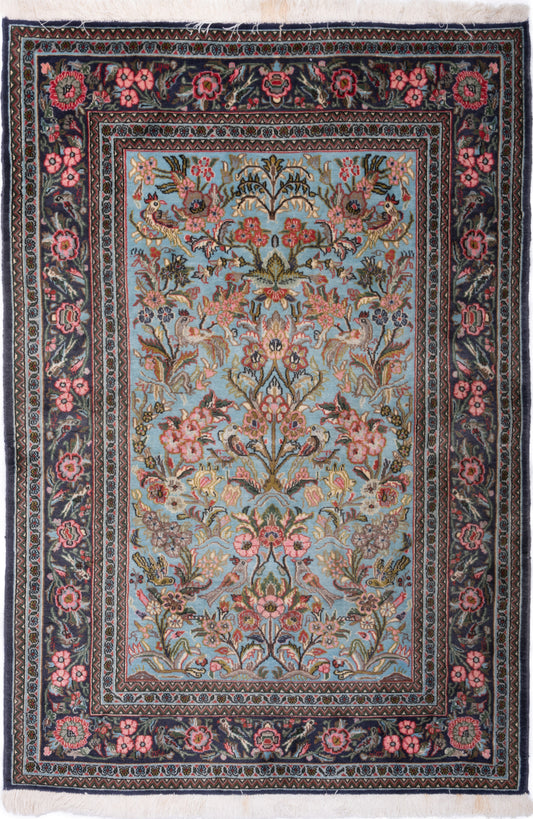 Sold
SoldPersian Qom Rug
Regular price £635.00Regular priceUnit price / per -
Persian Qom Rug
Regular price £3,185.00Regular priceUnit price / per -
Semi-Antique Persian Qom Rug
Regular price £955.00Regular priceUnit price / per -
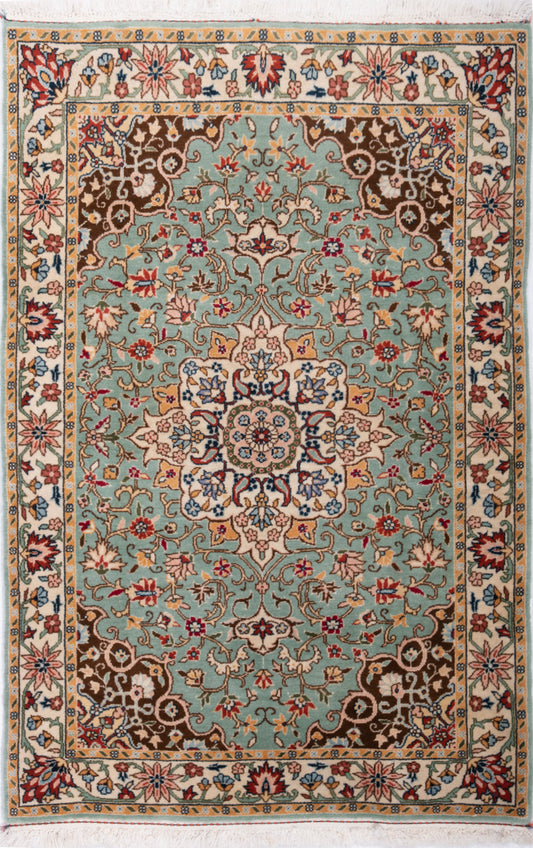 Sold
SoldPersian Qom Rug
Regular price £505.00Regular priceUnit price / per -
Persian Qom Runner Rug
Regular price £1,175.00Regular priceUnit price / per -
Persian Qom Runner Rug
Regular price £2,025.00Regular priceUnit price / per




